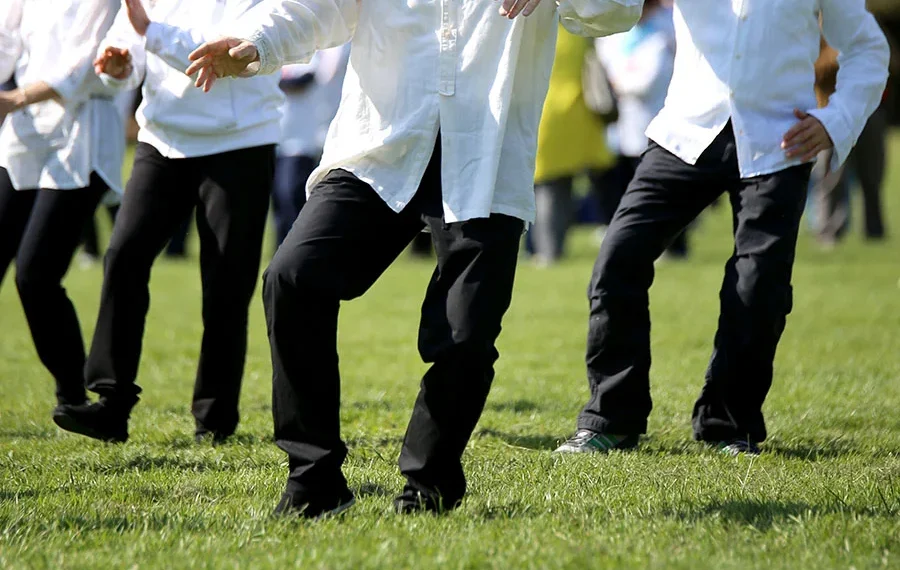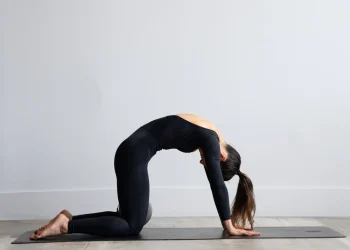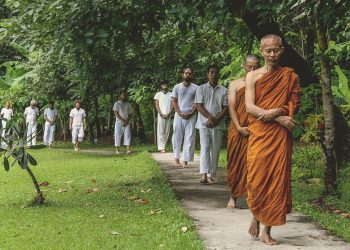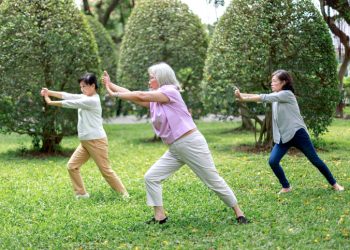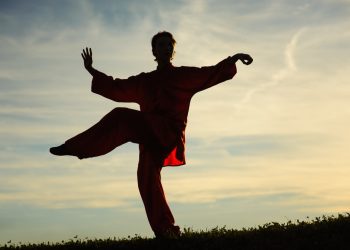Tai Chi walking, often referred to as “Tai Chi walking meditation” or simply “Tai Chi steps,” forms the foundational movement pattern of this ancient Chinese martial art and wellness practice. Unlike ordinary walking, Tai Chi walking embodies the core principles of slowness, mindfulness, weight shifting, and continuous flowing motion. These deliberate, controlled steps serve as the building blocks for all Tai Chi forms and sequences, making mastery of proper walking technique essential for practitioners at every level.
The art of Tai Chi walking transcends simple locomotion—it becomes a moving meditation that cultivates balance, strength, body awareness, and the harmonious flow of qi (life energy) throughout the body. Whether you’re a beginner seeking to understand the basics or an experienced practitioner looking to refine your technique, understanding the specific mechanics of Tai Chi walking steps will deepen your practice and enhance the benefits you receive.
The Fundamental Principles
Before diving into the specific steps, it’s crucial to understand the underlying principles that govern Tai Chi walking. These principles distinguish Tai Chi movement from ordinary walking and inform every aspect of the practice.
Rootedness and Grounding: Each step must emerge from a stable, rooted connection to the earth. The weight-bearing leg should feel as though it’s growing roots deep into the ground, providing unwavering support for the body.
Weight Shifting: Tai Chi walking emphasizes clear, deliberate weight transitions. At any given moment, you should know precisely which leg bears your weight—typically described as the “full” leg (100% weight) versus the “empty” leg (0% weight).
Continuous Motion: Unlike normal walking with distinct stops and starts, Tai Chi walking flows continuously like water. Each movement melts seamlessly into the next without pause or acceleration.
Upright Posture: The torso remains vertical and relaxed throughout the walking sequence, with the head suspended as if held by a string from above, the chest slightly hollowed, and the tailbone tucked gently forward.
The Basic Tai Chi Walking Step Sequence
Step 1: The Starting Position
Begin in the Wu Chi stance, the foundational standing posture of Tai Chi. Stand with feet parallel, shoulder-width apart, knees slightly bent, and weight evenly distributed between both feet. Your arms hang naturally at your sides, shoulders relaxed and dropped, chin slightly tucked. Take several deep breaths, sinking your awareness into your lower abdomen (the dantian, located about two inches below the navel). Feel your connection to the ground through your feet.
Step 2: Shifting Weight to One Leg
The walking sequence truly begins with the weight shift. Slowly and deliberately transfer 100% of your body weight to your right leg (or left, depending on which direction you’re moving). This process should take 3-5 seconds, not rushed. As you shift, maintain your upright posture—avoid leaning or tilting. The right leg becomes “full” while the left leg becomes “empty.”
You’ll know you’ve completed the weight shift when you could theoretically lift your empty leg without any adjustment or wobble. The full leg should feel rooted and stable, with slight compression in the knee (never locked), and the weight distributed evenly across the entire foot—heel, ball, and toes all grounded.
Step 3: Raising the Empty Leg
Once your weight is completely settled into the supporting leg, begin to raise the empty (left) leg. The movement originates from the hip, not by lifting the knee first. Keep the raised foot relaxed, toes pointing downward naturally. Lift the leg only as high as the ankle of your standing leg—excessive height creates imbalance and contradicts Tai Chi principles.
Throughout this phase, the torso remains still and centered over the supporting leg. Your hips should stay level; avoid hiking the hip of the raised leg upward.
Step 4: Extending the Empty Leg Forward
With the leg raised, slowly extend it forward. The heel leads the movement, traveling forward in a smooth arc. The knee remains soft and slightly bent throughout. The extended leg reaches forward only as far as feels comfortable without compromising your balance or pulling you off-center.
As the foot extends forward, it remains relaxed and flexible, not rigidly pointed or flexed. Imagine you’re gently placing your foot into a stream, letting it find its way naturally.
Step 5: Heel Contact
The heel makes first contact with the ground, touching down softly and deliberately. This isn’t a planted step but rather a gentle testing of the ground—imagine you’re checking if the surface is solid before committing your weight. The heel touches, but no weight transfers yet. Your entire body weight remains rooted in the back leg.
This heel-down-first pattern (called “heel stepping”) is characteristic of most Tai Chi walking, though some styles also teach “toe stepping” for certain applications.
Step 6: Rolling Through the Foot
With the heel in contact, begin the next weight shift. The front foot rolls gradually from heel to ball to toes as weight transfers forward. This rolling motion takes several seconds and should feel like you’re painting a smooth line on the ground with your foot.
Simultaneously, the back leg begins to empty as the front leg fills. The weight shift occurs through the center of your body, which moves forward in a level plane—no bobbing up and down. Your knees remain soft throughout, and the back leg gradually straightens (but never locks) as it empties.
Step 7: Completing the Weight Transfer
The weight shift completes when 100% of your weight rests on the front leg, which is now bent with the knee aligned over the toes (never extending past them). The entire front foot should be in full contact with the ground, rooted and stable.
The back leg is now completely empty, touching the ground only lightly with the ball and toes. The back knee remains slightly bent, maintaining the leg’s spring and aliveness.
Step 8: Preparing the Next Step
With weight fully on the front leg, you’re in position to begin the next step. The empty back leg will now peel away from the ground, starting with the heel lifting while the toes maintain light contact. This begins the cycle again as you prepare to bring the back leg forward.
Footwork Patterns and Variations
Straight-Line Walking
The most basic pattern involves walking in a straight line, placing each foot directly in front of the other along a single track. This narrow stance challenges balance and refines your control over weight shifting.
Parallel Walking
For greater stability, particularly for beginners, walk with feet following parallel lines shoulder-width apart. Each foot stays on its respective line, never crossing the body’s centerline. This creates a more stable base while still allowing practice of proper Tai Chi mechanics.
Arc and Circle Walking
More advanced practitioners incorporate walking in arcs and circles, which appears in many Tai Chi forms. The principles remain identical, but you must also coordinate subtle waist turns and direction changes. The body pivots from the dantian, not by twisting the shoulders or hips independently.
Backward Walking
Walking backward in Tai Chi follows similar principles but reverses the sequence. The toes touch first, then the foot rolls through ball to heel. Backward walking develops different muscle engagement and heightens proprioceptive awareness.
Coordinating Upper Body Movements
While the legs perform the walking steps, the upper body must coordinate harmoniously:
Arm Swinging: In basic Tai Chi walking, arms swing naturally and softly, opposite to the legs (right arm forward with left leg, and vice versa). The swing comes from the waist rotation, not from muscle effort in the shoulders or arms. Elbows remain slightly bent, and hands stay relaxed.
Waist Rotation: The waist (or more precisely, the dantian region) initiates and guides all movement. As you step forward with the left leg, the waist rotates slightly to the right, allowing the right arm to swing forward naturally. This creates a subtle spiral through the torso.
Shoulder and Chest Alignment: Keep shoulders relaxed and level, avoiding any hunching or tensing. The chest remains slightly concave (the opposite of “puffing out your chest”), which allows the back to round gently and the spine to maintain its natural curve.
Head and Gaze: The head floats upward while the chin tucks slightly, creating a lengthened neck. Your gaze directs softly forward at eye level or slightly downward. Avoid staring fixedly at any point; instead, maintain a soft, peripheral awareness.
Common Mistakes and Corrections
Mistake 1: Rushing the Weight Shift Many beginners transfer weight too quickly, missing the meditative quality and balance benefits. Correction: Count slowly to five during each shift, ensuring the transfer is smooth and complete.
Mistake 2: Double-Weighting Keeping weight on both legs simultaneously creates instability and blocks energy flow. Correction: Practice standing on one leg frequently to develop comfort with full weight commitment.
Mistake 3: Bobbing Up and Down The torso should travel forward on a level plane. Correction: Practice walking alongside a mirror or wall, monitoring that your head height remains constant.
Mistake 4: Leaning Tilting forward, backward, or sideways disrupts balance and proper alignment. Correction: Imagine a plumb line running from crown to tailbone, keeping it vertical throughout your walk.
Mistake 5: Tension Gripping or holding tension in muscles, particularly in shoulders, neck, or legs. Correction: Regularly scan your body for tension, breathing into tight areas and consciously releasing.
Benefits and Practice Recommendations
Regular practice of Tai Chi walking steps offers numerous benefits:
- Improved balance and fall prevention
- Strengthened legs and core muscles
- Enhanced body awareness and proprioception
- Reduced stress and anxiety through moving meditation
- Better posture and spinal alignment
- Increased circulation and energy flow
Begin by practicing 5-10 minutes daily, gradually extending to 20-30 minutes as comfort increases. Practice in a quiet space with good footing, ideally on a flat surface where you can walk in a straight line for 10-20 steps. Many practitioners enjoy taking Tai Chi walking outdoors once the basics are mastered, connecting with nature while moving.
Conclusion
Tai Chi walking steps represent far more than a simple method of moving from place to place. They embody the essential principles of Tai Chi itself: mindfulness, balance, continuous flow, and the integration of body and mind. By dedicating time to understanding and practicing these fundamental movements, you build the foundation for all Tai Chi practice while simultaneously cultivating greater awareness, strength, and tranquility in daily life. Whether practiced as standalone meditation or as preparation for learning complete Tai Chi forms, mastering these walking steps opens the door to the profound benefits this ancient art offers.

